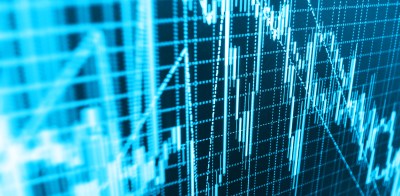Data as of August 31, 2020 unless otherwise noted.
Performance (total returns)
| Benchmarks | August 2020 | YTD |
| Bloomberg Barclays U.S. Aggregate Bond Index (Barclays Agg) | -0.81% | 6.85% |
| ICE BofAML U.S. High Yield Master II Index (HY Bonds) | 0.98% | 0.75% |
| S&P/LSTA Leveraged Loan Index (Senior Secured Loans) | 1.49% | -1.29% |
Performance data quoted represents past performance and is no guarantee of future results. An investment cannot be made directly in an index.
Leveraged credit marched steadily higher in August: Credit markets continued their upward climb in August with HY Bonds and Senior Secured Loans each posting a fifth consecutive month of gains. Bonds returned 0.98% while loans, which lagged HY Bonds in July, returned 1.49% and posted only one down day in August. Every industry in both markets posted positive performance during August and gains were driven by lower-rated assets, a sign that the recovery is becoming more broad-based. Year to date, CCC loans and bonds as well as industries most impacted by the economic fallout from the COVID-19 pandemic, such as energy and travel, continue to lag. Primary activity remained robust, bucking the typical late-summer slowdown trend. Bonds continue to be the financing source of choice in the low-rate environment, with HY issuance recording its third highest monthly volume on record. This heightened level of supply continues to be met with demand as HY funds saw a fifth consecutive month of inflows. Loan funds continue to see outflows, but August’s pace of withdrawals was much slower than during the prior four months.
Defaults and downgrades update: The virtual halt in economic activity this year has all but guaranteed rising default rates in credit markets. Both HY Bonds and Senior Secured Loans have already seen rising rates, which are currently at 10-year highs of 5.77% and 4.38%, respectively. For context, the long-term average HY and loan default rates are 3.4% and 3.0%, respectively. Defaults thus far have been heavily concentrated in sectors most impacted by the pandemic’s economic fallout and cratering oil prices. Energy companies represent roughly 30% of year-to-date defaults, with retail and gaming and leisure companies also heavily impacted. The Federal Reserve’s swift actions have been instrumental in providing capital and liquidity to companies weathering COVID-induced shutdowns, but historically default rates have tended to lag peak credit spreads by roughly one year. Spreads peaked on March 23, meaning if the typical pattern holds we are likely to see elevated levels of defaults for another 6–8 months. As a lagging indicator, however, it is not uncommon to see default rates rise coincidentally with markets. In addition to defaults, there have been elevated levels of downgrades, which have far outpaced upgrades in both HY and loans year to date. Fallen angel volume continues to rise, as $205 billion of previously investment grade rated companies have now entered the high yield market. Active managers with experience investing in a variety of complex situations should benefit from these historic dislocations across credit markets.
Key takeaways
- Credit markets climbed steadily higher throughout a relatively quiet August, with HY Bonds and Senior Secured Loans returning 0.98% and 1.49%, respectively.
- Interest rates rose throughout the month following the Fed’s inflation policy shift, sending the duration-sensitive Barclays Agg down -0.81%.


